Digs & Discoveries
Who Is That Masked God?
By BENJAMIN LEONARD
Friday, December 04, 2020
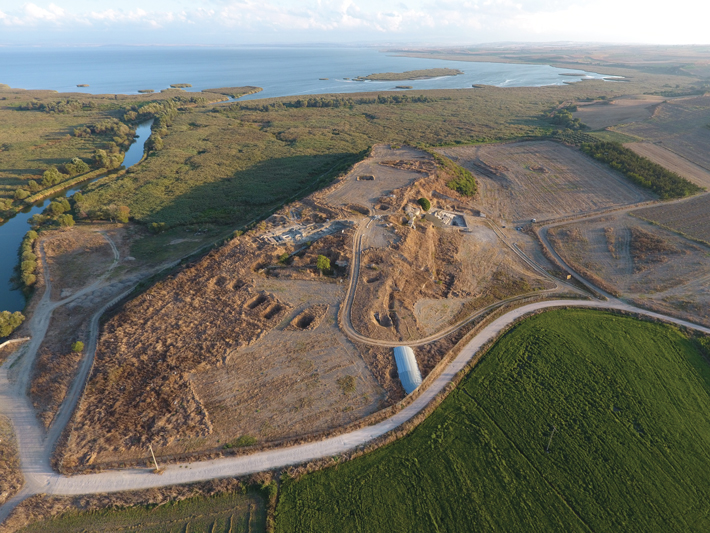
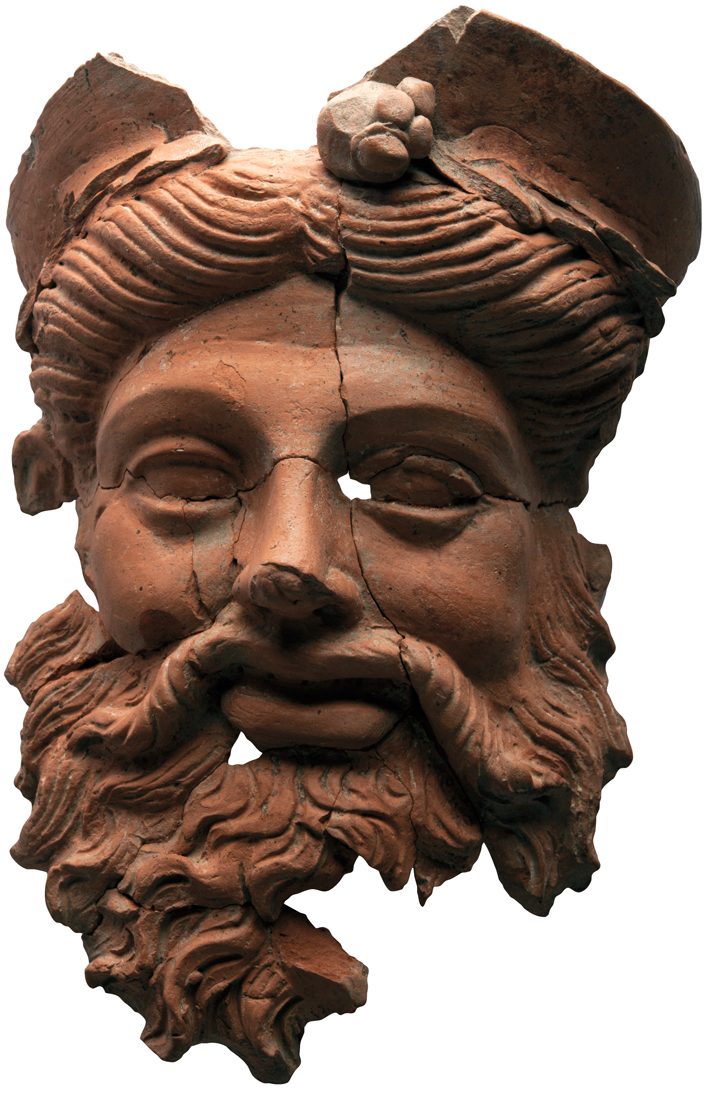 A nearly intact terracotta mask depicting the Greek god Dionysus was unearthed by a team led by Kaan İren of Muğla Sıtkı Koçman University on the acropolis of the ancient city of Daskyleion in western Turkey. The artifact likely dates to the end of the fourth century B.C., when the multicultural city—which had previously been controlled by the Phrygians, Lydians, and Persians—was subject to Greek influence following Alexander the Great’s invasion of the region in 334 B.C. In addition to his role as the god of wine and fertility, Dionysus was the patron of theater and impersonation. Masks were common elements of rituals honoring the deity, and were frequently worn by his followers during cult ceremonies. Researchers believe this particular mask was a votive object offered to the god during a winemaking ritual.
A nearly intact terracotta mask depicting the Greek god Dionysus was unearthed by a team led by Kaan İren of Muğla Sıtkı Koçman University on the acropolis of the ancient city of Daskyleion in western Turkey. The artifact likely dates to the end of the fourth century B.C., when the multicultural city—which had previously been controlled by the Phrygians, Lydians, and Persians—was subject to Greek influence following Alexander the Great’s invasion of the region in 334 B.C. In addition to his role as the god of wine and fertility, Dionysus was the patron of theater and impersonation. Masks were common elements of rituals honoring the deity, and were frequently worn by his followers during cult ceremonies. Researchers believe this particular mask was a votive object offered to the god during a winemaking ritual.
The Bone Collector
By ZACH ZORICH
Friday, December 04, 2020
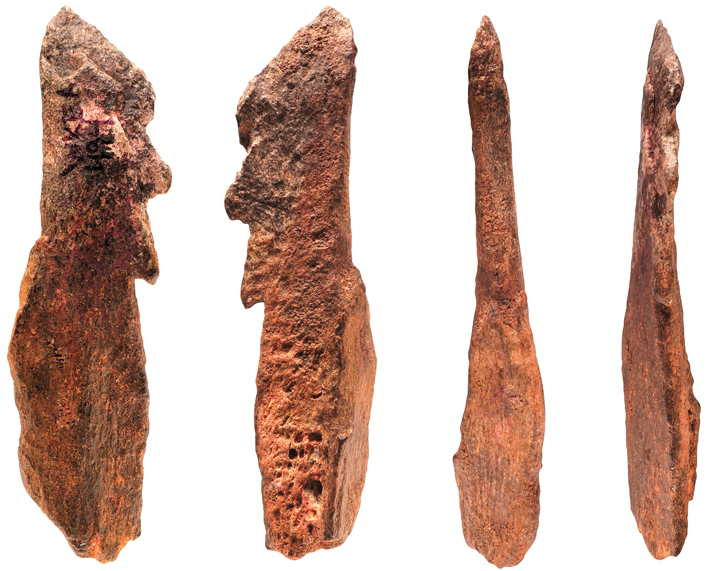 The date of the earliest known bone point has been pushed back by 700,000 years, says paleoanthropologist Michael Pante of Colorado State University. While reexamining a collection of bones that had been recovered from Tanzania’s Olduvai Gorge by renowned fossil hunter Mary Leakey, Pante noticed that some show signs of having been shaped by human hands. One of the artifacts appeared to be an unfinished bone point with barbs carved into its side. An international team that included Pante analyzed the tool and concluded that the bone had been flaked using a hammer stone or another object. It had also been scraped and polished.
The date of the earliest known bone point has been pushed back by 700,000 years, says paleoanthropologist Michael Pante of Colorado State University. While reexamining a collection of bones that had been recovered from Tanzania’s Olduvai Gorge by renowned fossil hunter Mary Leakey, Pante noticed that some show signs of having been shaped by human hands. One of the artifacts appeared to be an unfinished bone point with barbs carved into its side. An international team that included Pante analyzed the tool and concluded that the bone had been flaked using a hammer stone or another object. It had also been scraped and polished.
The bone point has been dated to 800,000 years ago, at which time Homo erectus lived at Olduvai. This species is known to have made bone hand axes that look similar to the stone Acheulean hand axes they used as all-purpose butchery tools. Bone hand axes that are more than a million years old have also been found at Olduvai and at the site of Konso in Ethiopia. According to Pante, making bone tools is one of the markers of our hominin ancestors achieving modern human behavior. “Now that we see [this ability developing] much earlier,” he says, “we can say that Homo erectus was a lot more human than we would have originally thought.”
Formatting Bronze Age Tablets
By DANIEL WEISS
Friday, December 04, 2020
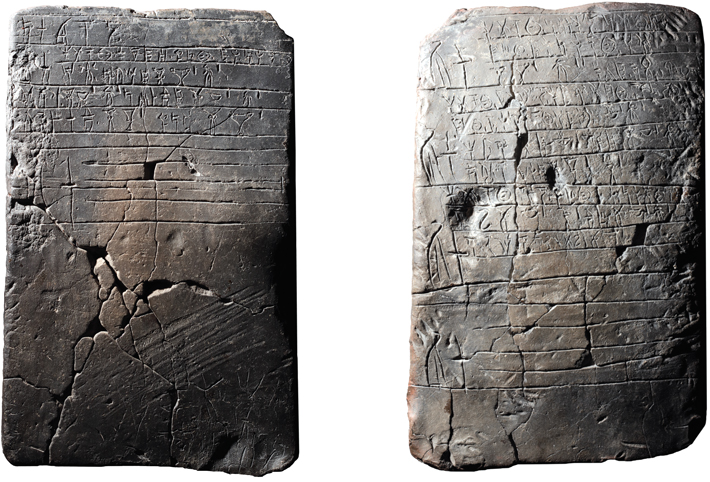 Although they were only meant to be kept for a year or so, administrative documents recording the people and goods controlled by the palaces of Late Bronze Age Greece (ca. 1400–1200 B.C.) show signs of having been carefully edited to present information in a clear, orderly fashion. The documents, which were written on clay tablets using a script known as Linear B, have only survived because they were accidentally fired and hardened when the buildings in which they were stored burned.
Although they were only meant to be kept for a year or so, administrative documents recording the people and goods controlled by the palaces of Late Bronze Age Greece (ca. 1400–1200 B.C.) show signs of having been carefully edited to present information in a clear, orderly fashion. The documents, which were written on clay tablets using a script known as Linear B, have only survived because they were accidentally fired and hardened when the buildings in which they were stored burned.
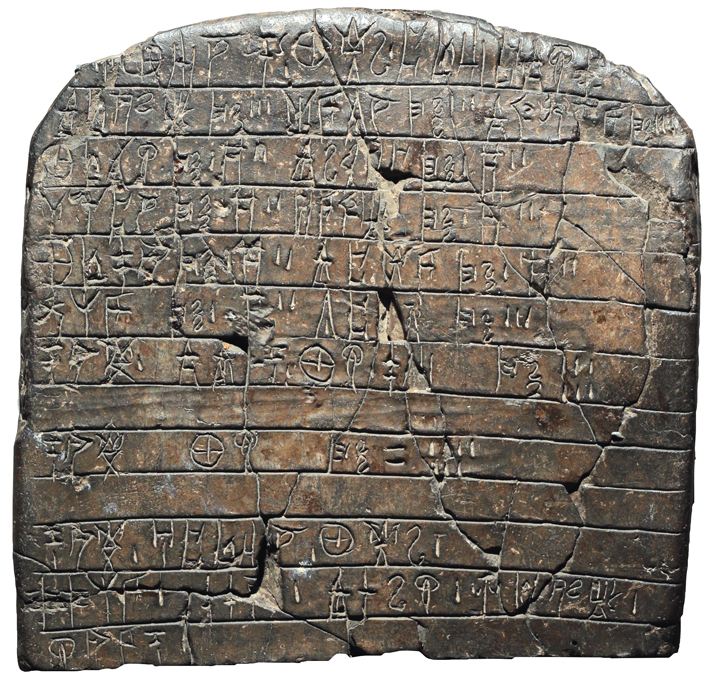 In the case of a tablet listing offerings to various deities at the palace of Pylos, says Anna P. Judson, a research fellow at the British School at Athens, these edits affected how the entire document was organized. On the tablet’s front side, the scribe worked out a way of presenting the list by writing “At Pylos…” in large script and then applying this heading to a number of different offerings. On the back, the scribe put this system into practice throughout. “The fascinating thing about this is that you can see the decision-making process happening,” says Judson. “You can see this person 3,000 years ago in the middle of writing something stop and think, ‘Wait, should I do this a different way?’”
In the case of a tablet listing offerings to various deities at the palace of Pylos, says Anna P. Judson, a research fellow at the British School at Athens, these edits affected how the entire document was organized. On the tablet’s front side, the scribe worked out a way of presenting the list by writing “At Pylos…” in large script and then applying this heading to a number of different offerings. On the back, the scribe put this system into practice throughout. “The fascinating thing about this is that you can see the decision-making process happening,” says Judson. “You can see this person 3,000 years ago in the middle of writing something stop and think, ‘Wait, should I do this a different way?’”
Another tablet from Pylos that records the amount of bronze allocated to a number of different smiths also shows signs of having been edited on the fly. After enumerating how much bronze each smith received, the scribe wrote the total amount of bronze distributed, then erased the sum and wrote it again on the next line. The scribe left another line blank before starting the next paragraph, allowing the total to stand out clearly.
Cat's Eye View
By BENJAMIN LEONARD
Friday, December 04, 2020
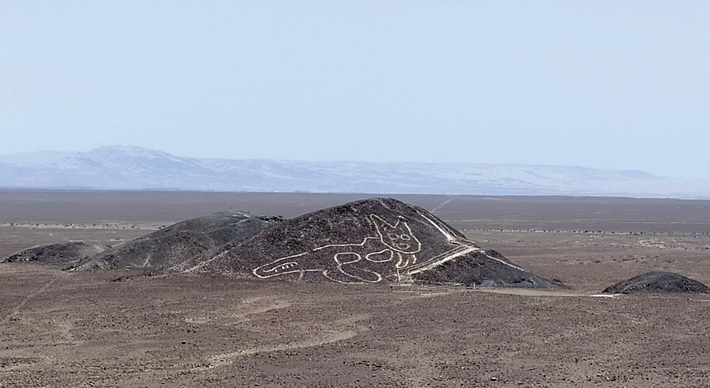 While restoring a viewing area overlooking the Nazca Lines in the desert of southern Peru, archaeologists noticed the previously undocumented traces of a cat geoglyph crouching on a steep hillside. The 121-foot-long outline of a feline was badly eroded but has since been cleaned and conserved. Based on its resemblance to depictions of Andean cats frequently found on textiles, ceramics, and petroglyphs produced by the Paracas culture, researchers have dated the figure to around 200 B.C. This means it predates the creation of many Nazca geoglyphs by some 400 years. “This feline seems to have been part of Paracas religious cosmology of the time,” says archaeologist Johny Isla of Peru’s Ministry of Culture. “The cat was considered a deity that represented dominion over the earth, together with the killer whale and condor that signified dominion over water and air.”
While restoring a viewing area overlooking the Nazca Lines in the desert of southern Peru, archaeologists noticed the previously undocumented traces of a cat geoglyph crouching on a steep hillside. The 121-foot-long outline of a feline was badly eroded but has since been cleaned and conserved. Based on its resemblance to depictions of Andean cats frequently found on textiles, ceramics, and petroglyphs produced by the Paracas culture, researchers have dated the figure to around 200 B.C. This means it predates the creation of many Nazca geoglyphs by some 400 years. “This feline seems to have been part of Paracas religious cosmology of the time,” says archaeologist Johny Isla of Peru’s Ministry of Culture. “The cat was considered a deity that represented dominion over the earth, together with the killer whale and condor that signified dominion over water and air.”
Face Off
By JASON URBANUS
Friday, December 04, 2020
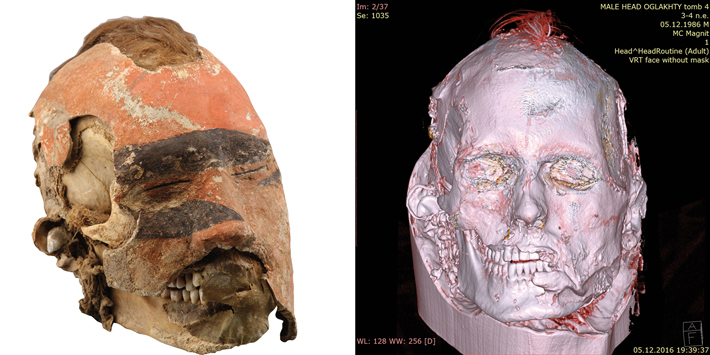 The Tashtyk culture, which existed between the first and seventh centuries A.D. in southern Siberia, is known for its elaborate burial customs, including applying layers of gypsum onto the deceased’s face to create lifelike death masks. A stunning example of this practice—the mummified remains of a man buried some 1,700 years ago wearing a painted red death mask—was discovered in the late 1960s in the Khakassia region. More than half a century later, researchers from Russia’s Hermitage Museum have finally managed to glimpse the man’s face.
The Tashtyk culture, which existed between the first and seventh centuries A.D. in southern Siberia, is known for its elaborate burial customs, including applying layers of gypsum onto the deceased’s face to create lifelike death masks. A stunning example of this practice—the mummified remains of a man buried some 1,700 years ago wearing a painted red death mask—was discovered in the late 1960s in the Khakassia region. More than half a century later, researchers from Russia’s Hermitage Museum have finally managed to glimpse the man’s face.
Since removing the mask would damage the mummy, the researchers instead conducted a CT scan to peer beneath the facial covering. The scan revealed that the man had a nasty gash across the left side of his face, running from his eye to his ear, that had been sutured shut prior to his burial. Experts believe the wound may have been fatal, and that it was stitched up after the man died so he would not have to go to the afterlife with a disfigured appearance. The scan also showed that the man’s skull has a two-to-three-inch hole in its left temple, likely resulting from the removal of his brain during his funerary ceremony.
Advertisement
Advertisement
IN THIS ISSUE
Features
Top 10 Discoveries of 2020
Top 10 Discoveries of the Decade
Return to the River
Letter from Woodhenge
Digs & Discoveries
Reading, Writing, and Algorithms
Face Off
Formatting Bronze Age Tablets
Cat's Eye View
The Bone Collector
Who Is That Masked God?
Persian Steel
Head Space
Offerings at Sea
Bathing With the Toad Goddess
Off the Grid
Around the World
Peopling the Caribbean, Scythian warrior couple, dogs of the First Nations, and a stonemason’s inside joke
Artifact
Praying inside the box
Advertisement

Recent Issues
-
 May/June 2024
May/June 2024
-
 March/April 2024
March/April 2024
-
 January/February 2024
January/February 2024
-
 November/December 2023
November/December 2023
-
 September/October 2023
September/October 2023
-
 July/August 2023
July/August 2023
-
 May/June 2023
May/June 2023
-
 March/April 2023
March/April 2023
-
 January/February 2023
January/February 2023
-
 November/December 2022
November/December 2022
-
 September/October 2022
September/October 2022
-
 July/August 2022
July/August 2022
-
 May/June 2022
May/June 2022
-
 March/April 2022
March/April 2022
-
 January/February 2022
January/February 2022
-
 November/December 2021
November/December 2021
-
 September/October 2021
September/October 2021
-
 July/August 2021
July/August 2021
-
 May/June 2021
May/June 2021
-
 March/April 2021
March/April 2021
-
 January/February 2021
January/February 2021
-
 November/December 2020
November/December 2020
-
 September/October 2020
September/October 2020
-
 July/August 2020
July/August 2020
-
 May/June 2020
May/June 2020
-
 March/April 2020
March/April 2020
-
 January/February 2020
January/February 2020
-
 November/December 2019
November/December 2019
-
 September/October 2019
September/October 2019
-
 July/August 2019
July/August 2019
-
 May/June 2019
May/June 2019
-
 March/April 2019
March/April 2019
-
 January/February 2019
January/February 2019
-
 November/December 2018
November/December 2018
-
 September/October 2018
September/October 2018
-
 July/August 2018
July/August 2018
-
 May/June 2018
May/June 2018
-
 March/April 2018
March/April 2018
-
 January/February 2018
January/February 2018
-
 November/December 2017
November/December 2017
-
 September/October 2017
September/October 2017
-
 July/August 2017
July/August 2017
-
 May/June 2017
May/June 2017
-
 March/April 2017
March/April 2017
-
 January/February 2017
January/February 2017
-
 November/December 2016
November/December 2016
-
 September/October 2016
September/October 2016
-
 July/August 2016
July/August 2016
-
 May/June 2016
May/June 2016
-
 March/April 2016
March/April 2016
-
 January/February 2016
January/February 2016
-
 November/December 2015
November/December 2015
-
 September/October 2015
September/October 2015
-
 July/August 2015
July/August 2015
-
 May/June 2015
May/June 2015
-
 March/April 2015
March/April 2015
-
 January/February 2015
January/February 2015
-
 November/December 2014
November/December 2014
-
 September/October 2014
September/October 2014
-
 July/August 2014
July/August 2014
-
 May/June 2014
May/June 2014
-
 March/April 2014
March/April 2014
-
 January/February 2014
January/February 2014
-
 November/December 2013
November/December 2013
-
 September/October 2013
September/October 2013
-
 July/August 2013
July/August 2013
-
 May/June 2013
May/June 2013
-
 March/April 2013
March/April 2013
-
 January/February 2013
January/February 2013
-
 November/December 2012
November/December 2012
-
 September/October 2012
September/October 2012
-
 July/August 2012
July/August 2012
-
 May/June 2012
May/June 2012
-
 March/April 2012
March/April 2012
-
 January/February 2012
January/February 2012
-
 November/December 2011
November/December 2011
-
 September/October 2011
September/October 2011
-
 July/August 2011
July/August 2011
-
 May/June 2011
May/June 2011
-
 March/April 2011
March/April 2011
-
 January/February 2011
January/February 2011
Advertisement






